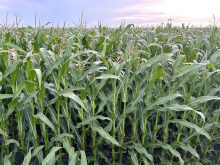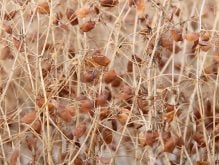(Resource News International) — An extremely mild winter, a fairly dry spring, and not a lot of freeze-thaw cycles have resulted in Ontario’s winter wheat crop experiencing minimal damage, according to an official with Ontario’s Ministry of Agriculture, Food, and Rural Affairs.
Conditions “that would typically damage the wheat crop were minimal this year and I would say it’s probably the least winter kill that I can recall since 1991,” said Peter Johnson, OMAFRA’s cereals specialist at Guelph.
In the fall of 2009, Ontario farmers seeded roughly 800,000 acres of winter wheat, compared to 950,000 acres in the fall of 2008, according to Johnson. The record for seeded acres in the province is two million from the fall of 2003.
Read Also

CFIA looks for feedback on proposed seed potato rule changes
The Canadian Food Inspection Agency is looking for public and industry input on proposed amendments to regulations around seed potatoes.
“There’s always a little bit” of winterkill, said Chad Anderson, an independent crop consultant in the Lambton County area. “Of all the acres that I’ve walked, 100 per cent survived.”
It’s not uncommon, he noted, to have somewhere up to 50 per cent loss in the wheat crop over the winter.
Preliminary estimates from Johnson pegged Ontario’s winter wheat output for the 2009-10 season at 1.4 million tonnes of soft red wheat, 200,000 of hard red winter wheat, and 100,000 of soft white winter wheat.
This compares with wheat output of 1.4 million tonnes of soft red wheat, 250,000 of hard red winter wheat, and 150,000 of soft white winter wheat from the previous crop year.
Of this year’s production, Johnson estimated 300,000-400,000 tonnes will be consumed in the domestic market, using all of the province’s hard red and soft white winter wheat production, while about one million will be exported, as the province overproduces soft red wheat.
Domestic usage of winter wheat in 2008-09 was about 300,000-400,000 metric tons, while Ontario exported one million to 1.2 million tonnes.
Both Anderson and Johnson felt the amount of winter wheat seeded in the fall of 2010 will be up from the 2009 level.
“Our trend line on acres is up — quite variable, but up,” said Johnson.














